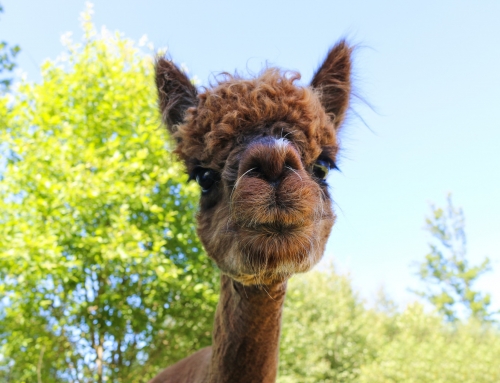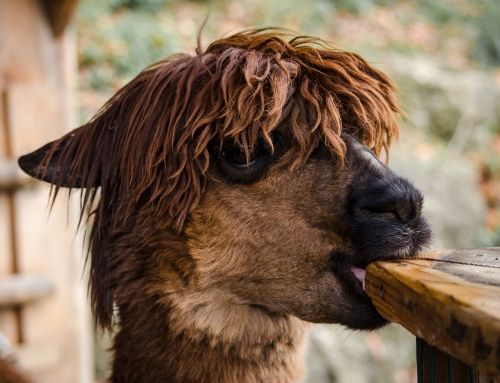How much does an Alpaca cost is almost always the first question I get when attending a farmers market. It is important to understand that a lot goes into the value of an alpaca, but it is important to realize that what someone is willing to pay is also important. As with any business, people that have something others don’t can require a premium for their product.
When surfing the internet for alpacas for sale, don’t get blown away by the prices! A quick skim of the first animals you see will show animals with price tags north of $10,000. It is important to note that those are some of the best animals in the world, from breeders who are paying to ensure that their animals are the first thing that you see.
While I always suggest that you purchase the most valuable alpacas you can afford, you can certainly find quality for reasonable prices. You just have to a little more research and maybe take a little more risk.
There is a lot that goes into the cost of an alpaca. Here are some of the many factors that can answer the underlying question of “How much does an alpaca cost?”:
Color
Color is a big factor in the value of an alpaca. Again, some breeders are going to find certain colors more valuable than others. For example, we focus on grey and black and are willing to pay higher prices for quality animals of those colors.
Right now, there is a bit of a divide in the alpaca breeding community when it comes to color and focus. Some farms are looking to breed white and light colors focusing on the commercial need. Other farms are looking for dark and unique colors for the cottage industry needs.
The commercial industry is looking to acquire light fiber that can be dyed to whatever color they desire. This is the easiest and most effective way for them to mass produce. The cottage industry is looking for natural colors and colors that stand out. They are not looking to dye or change the fiber in any way
Conformation
When considering how much an Alpaca should cost, conformation is something that you should consider. This is a term that is used describe the correctness of body structure in the animal.
Conformation makes a huge difference in the cost of an alpaca if you are planning on showing them. That being said, it can get you a great discount if you are looking for animals with great fiber and don’t care about conformation. Just keep in mind that certain things , like the structure of their teeth, are still important for keeping healthy animals. If you are going to breed, it is likely that they will pass those bad conformation traits on to their babies as well.
There are a lot of qualities that go into the conformation, but we will list a few of the most important ones:
- Good Teeth – The bottom teeth show meet the hard upper plate evenly.
- Straight Pointy Ears – When alert, you want to see ears that point straight up and come to a point.
- Good “Substance Of Bone” – You want to see some muscle on you animals. This is most evident in the chest and legs.
- Straight Legs And Back – The front legs, spine, and back legs should form a box.
- Back Legs Spread Apart – You want the animal to walk smoothly without hind legs rubbing each other.
Fleece Quality and Quantity
Since this is a fleece industry, it would make sense that the fleece quality factors into how much an alpaca costs. If you are looking for an Alpaca to start your farm with, then you want to start with one that produces a large amount of high quality fleece.
It will take some time and experience to be able to accurately grade a fleece, but their are some factors that you can tell pretty easily. This is not an exhaustive list by any means, but it will help get you going in the right direction!
Fineness
Fineness is a measurement of how thin the wool fibers are. The thinner the fiber, the softer and more luxurious it will feel as an end product. The fibers are measured in microns (one millionth of a meter) and can be easily tested in numerous labs throughout the country. You will get the feel for different ranges of fineness, but most reputable breeders will have their sale stock tested and can provide you with the report.
Density
Density is also just as important as fineness. Having one pound of very fine fiber is great, but ten pounds is a whole lot better. Density is a measurement of how many hairs are growing per square inch. It is hard to get a good idea of how dense an animal is by feel, but you can get a good idea. Their are also tests available to get a solid number for this statistic.
Staple Length
This is not the first thing you think of when asking how much does an alpaca cost, but it is very important. Longer fiber is much more desirable to work with than shorter fiber. It also helps add more to the total weight of the fleece. Fifty percent more staple length means fifty percent more fiber weight.
Crimp
Crimp is the zig zag, or zipper, effect that you see in the individual fibers. Good Crimp is very important for people looking to spin the wool because it helps it stay together better and creates a better quality end product.
Consistency
You may have heard this before, but “consistency is key”. You want your fiber to be the same quality from the front of the animal to the back. Whoever uses the fleece doesn’t want to divide the fleece into different piles of different quality levels in order to use it.
Age
This is one of the most obvious factors that can affect the cost of an Alpaca. Most people don’t go out and look to purchase a car that is already 20 years old. So why would you do the same with an Alpaca? Alpaca’s generally live to 10 – 15 years old, so animals over 10 will loose significant value.
One of the most important factors for most people look to find purchase an alpaca is breeding. Females typically have a reproductive life of between 10 and 16 years starting at 18 months old. If you are looking primarily to produce offspring for profit, then the value of a female Alpaca is going to drop off a percentage every year older it gets.
Another thing to consider is that the fleece tends to drop off in both quality and quantity as the Alpaca gets older. The older they get, the less profit that are going to produce on a yearly basis.
Gender and Breeding Results
Gender is an important factor when valuing an alpaca because most people are looking to breed. If you want to start your own Alpaca farm, then you should always buy the best quality females you can afford. You can always pay a stud fee to produce babies that have the potential to be an improvement over the dam. However, purchasing that male entirely is going to be a significant cost.
One huge quality that is going to help answer the question of how much does an Alpaca cost is whether they are proven on unproven. A proven female Alpaca means that they have had and supported a young cria with no issues. Some females cannot support having children and you will see them sold as “pet” or “fiber” Alpacas.
If they have not had babies before, they will be listed as unproven. This does not mean that they cannot have babies; it just means that they have never tried. These animals are priced between the proven females and those that are just sold as pets.
Genetics
The bloodline is obviously a huge factor when it comes to how much an Alpaca costs. An Alpaca that comes from a bloodline that has more desirable qualities is going to be worth more. The more direct relation they have to previous champions, the more they are worth.
Different genetics are meant for having very specific traits, such as extreme density, great crimp structure, or great confirmation. You can typically tell why an alpaca has a superior train by looking at their family tree and seeing specific animals.
Genetics are also an important thing to pay attention to because you want to avoid inbreeding. Make sure that you pay attention to who your animals come from so that you don’t start out with four girls and a boy that is related to all of them!
How Much Does An Alpaca Cost – The Conclusion
It is very tough to answer the question of “how much does an alpaca cost?”. Their is a lot that goes into the value of an alpaca. It is also constantly changing as the industry changes. We hope that we helped you shed a little light on the question and didn’t just make it more confusing. If you have any questions, feel free to leave them in the comment section below or reach out to us!






Leave A Comment